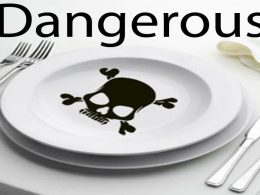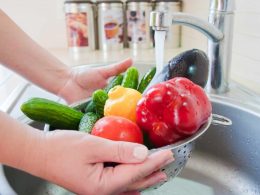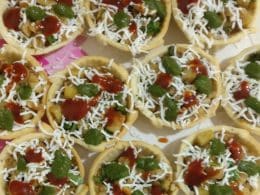Many of us share growing ethical concerns about the treatment of farm animals before they end up on our plates. It’s all too easy to think of beef, poultry, or pork as commodities, ingredients without a past.
We are encouraged to think of it in these terms because it comes so neatly wrapped in transparent plastic, bearing no signs of struggle.
In Diet for a New America, John Robbins outlines the harsh realities that precede the saran-wrapped packages. Well-cared-for calves munching grass while perky hens scratch nearby are largely a thing of children’s book illustrations. The unpleasant truth is
that in contemporary agribusiness, animals are treated like so much raw material, to be processed with the least expense and difficulty for the greatest financial return.
The realities of large-scale livestock production are severe overcrowding and mutilation: a life lived in fear in a highly artificial environment, removed from natural surroundings and diets.
Remember that the hormones and antibiotics pumped into livestock will make their way into human tissue when we eat these treated – and mistreated – animals.
Compelling reasons to stop eating meat, or at least to cut down on it as much as possible. For those occasions when you still serve meat, find a reputable supplier of organic, free-range meat; it will be free of additives, and the animals will have led more normal lives.
Check your natural foods store or farmers’ market for free-range eggs and organic produce: you’ll be supporting local growers at the same time. Reasons aplenty to give serious thought about what’s on your plate and how it got there.
Far too many North Americans eat without thinking, putting into their mouths what’s convenient, or trendy. It’s hard to resist the slick and persuasive food imagery with which we’re bombarded by TV, magazine, and supermarket advertising.
The sophisticated campaigns of multinational corporations and marketing boards effectively tap our food nostalgia, as well as our anxieties about health.
Supermarket shelves are crowded with “natural” products, including mass-produced “granola bars” with chocolate chips, corn syrup, and the shelf life of a year.
“Cholesterol-free” frozen french fries are another example; the irony is that while they are free of cholesterol, they are not free of fat. They offer more in the way of convenience than they do nutritional value.
We are not doing our bodies any favour when we eat without thinking, without examining the content of the food we eat, or the context of the choices we make about food. If food is the very stuff of life, do we really want to live a “fast food existence”?
I’ve touched briefly on the many reasons for turning away from a steady diet of meat. But I shouldn’t neglect to mention some of the delightful, exciting, delicious reasons for choosing a vegetarian diet. For those of us who grew up on the traditional, western diet of meat-and-potatoes, vegetarian cuisine represents a whole world of discoveries.
Many cultures have specialized in vegetarian cooking for centuries, developing subtle and tantalizing combinations of ingredients.
Vegetarian cooking is an invitation to adventure. No matter how far down the road to a vegetarian lifestyle you find yourself, it’s wise to remember that food is a very personal issue.
People can be very idiosyncratic and emphatic about food, rooted as it is in both emotional and political connotations.
“Food fascists” who insist that others share their food choices are unlikely to win converts. Respect for the other person, sharing, and enjoying works a lot better.
What Do Vegetarians Eat?
Some people simply can’t imagine a dinner plate without a meat-based entrée front and centre. “What do vegetarians eat?!?,” I’ve been asked. “Almost everything that wouldn’t eat them first,” is one response. The list of options for vegetarians is extensive and varied enough to delight any gourmet.
Many cultural groups around the world have lived as vegetarians for centuries, so that we have rich culinary traditions to enjoy. Some have not had the luxury of an economy or a climate that lent itself to the production of meat. Others refrain from eating meat for religious or moral reasons.
In Japan tofu is a daily dish, eaten with vegetables like daikon radish, squash or bean sprouts, and noodles called udon or soba. In Italy one would sit down to a plate of pasta primavera during Lent with fresh peas and young greens.
In India, lentils, split peas, and rice are served alongside spinach, potatoes, and homemade cheese. Millet, peanuts, tomatoes, and okra are staples in northern Africa. Most cuisines have traditional combinations which unconsciously provide protein complements: tortillas and beans, rice and tofu, nuts and grains.
In North America, a healthy vegetarian diet is made up of a balanced mix of fresh vegetables and fruit, grains, nuts, beans, soy products like tofu and tempeh, and sometimes cheese, milk, and eggs. We’ve borrowed from other cultures, and created traditions of our own.
There may be a main entrée, such as lasagna, or tempeh burgers, or the meal may consist of a couple of salads or vegetable dishes that go well together.
Like meat eaters, vegetarians eat casseroles, soups, sandwiches, salads, and favorites like spaghetti, pizza, and tacos. And even desserts









